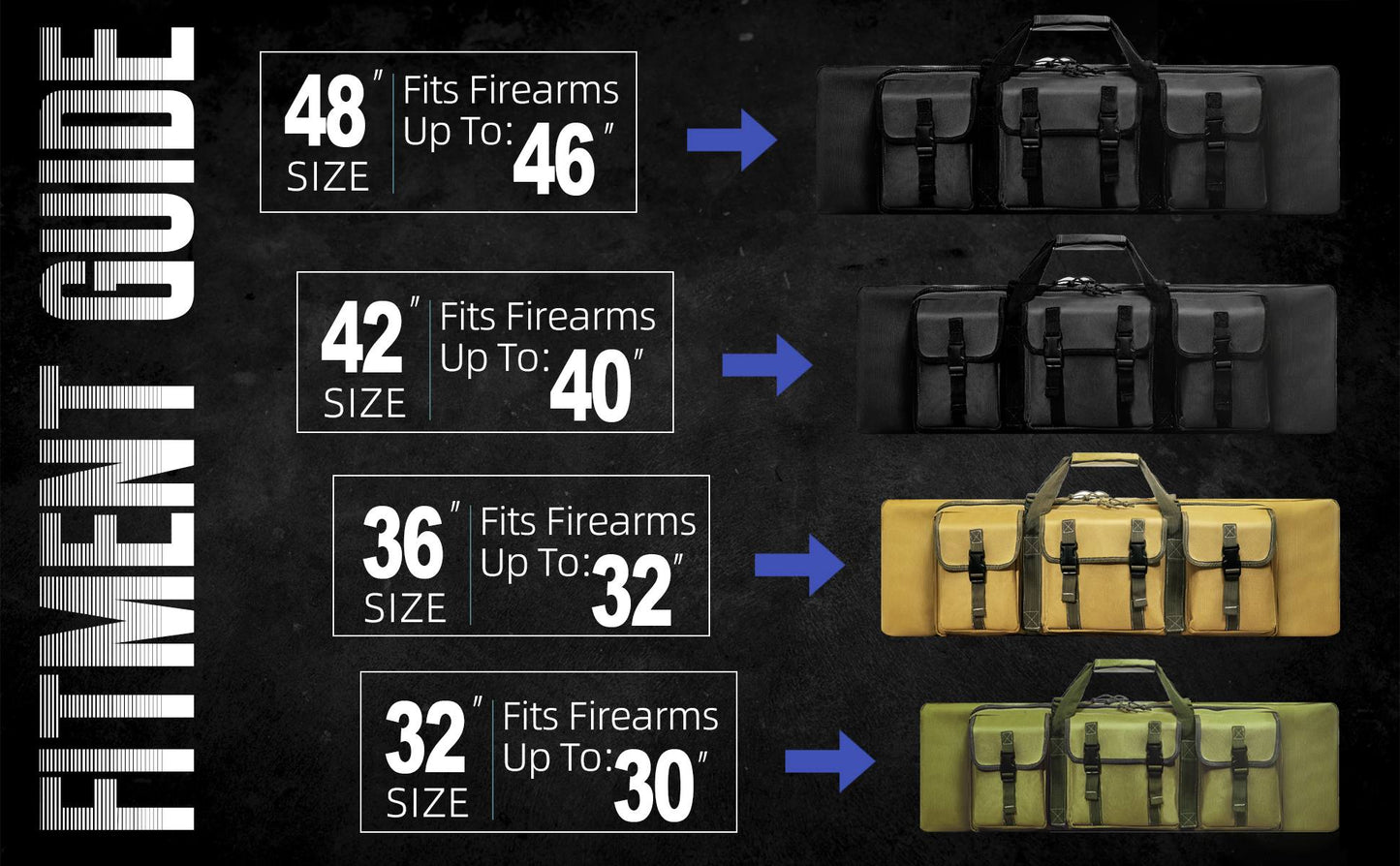
Your choice of foam material matters when storing firearms. Each type - PU, EPE, and EVA - has specific strengths for protecting guns. While PU foam excels at absorbing shock, EPE provides reliable moisture protection, and EVA offers good weather resistance at a lower cost. This guide covers what you need to know about these materials to choose the right one for your gun case.
Polyurethane (PU) Foam: Premium Protection For High-Value Gun Cases
Core Physical Characteristics
PU foam's high density structure provides the most reliable protection for firearms in storage cases. The material's tight cell composition effectively absorbs impacts from drops or bumps, preventing damage to stored weapons. When a gun case takes a hit, PU foam spreads the force across its surface, keeping firearms safe from sudden impacts.
Environmental Response and Protection
In gun cases, PU foam keeps its protective qualities in both hot and cold storage conditions, though moisture needs monitoring. The material works reliably in varied temperatures, but gun owners should avoid storing cases in damp areas. Its vibration-dampening properties make it ideal for transporting firearms, especially during rough handling or vehicle transport.
Manufacturing and Cost Considerations
Making gun cases with PU foam costs more due to its complex production process. While this leads to higher prices for PU foam cases, the superior protection justifies the cost for valuable firearms. The careful manufacturing ensures consistent quality throughout the case lining.
Durability and Maintenance
PU foam gun cases last for years with basic care. The material keeps its shape well, preventing permanent dents where firearms rest. To maintain the case's protection level:
- Inspect the foam lining for damage after rough handling
- Store gun cases in dry areas
- Remove dust and debris from foam surfaces
- Avoid extreme temperature storage locations
Custom Fitting for Firearms
PU foam's density allows precise cutting for specific gun models. Case manufacturers can create exact outlines for firearms and their accessories, from simple handgun slots to complex rifle configurations. These precise fits prevent weapons from shifting during transport and storage.
Expanded Polyethylene (EPE) Foam: Balanced Protection at Mid-Range Cost
Physical Structure for Gun Cases
EPE foam brings welcome lightness to gun cases without sacrificing protection. Its stable cell structure springs back after compression, maintaining consistent support for stored firearms. This resilience proves particularly useful in cases that see frequent opening and closing.
Moisture and Chemical Protection
For gun owners concerned about environmental factors, EPE foam offers strong defense against moisture and chemicals. The material creates an effective barrier that helps protect firearms from rust and corrosion. This makes EPE-lined cases suitable for long-term storage in various conditions.
Protective Performance
EPE foam delivers reliable cushioning for firearms during storage and transport. While not as impact-resistant as PU foam, it adequately protects guns from normal bumps and vibrations. The material holds its shape well, ensuring firearms stay properly positioned in their designated cutouts.
Value and Cost Benefits
Gun cases using EPE foam hit a sweet spot between protection and price. The material costs less than PU foam while offering good defensive capabilities. This makes EPE cases an attractive option for most recreational shooters and collectors who need reliable protection without premium pricing.
Long-Term Use and Care
EPE foam cases need minimal upkeep to maintain their protective qualities. The material resists breaking down over time and keeps its supportive properties through regular use. Basic cleaning with a dry cloth removes dust and debris, while the foam's natural resistance to moisture helps prevent mold growth.
Fitting Options
Case manufacturers appreciate EPE foam's adaptability. The material cuts cleanly for precise gun fits and can be shaped using heat for complex storage configurations. This flexibility allows for efficient production of cases that accommodate various firearm types and sizes.
Ethylene-Vinyl Acetate (EVA) Foam: Cost-Effective Surface Protection for Gun Cases
Flexible Protection Features
EVA foam offers a softer, more flexible approach to gun case protection. Its closed-cell structure creates a gentle but firm cushion that prevents scratches and surface damage to firearms. The foam's resilience allows it to regain its shape quickly after compression, maintaining consistent support for stored weapons.
Weather and UV Resistance
Gun cases lined with EVA foam perform well in outdoor conditions. The material withstands exposure to sunlight without degrading and maintains its protective qualities in various weather conditions. This durability makes EVA-lined cases practical for hunters and outdoor shooting enthusiasts who often expose their equipment to the elements.
Surface Protection Capabilities
While EVA foam may not match PU foam's impact resistance, it excels at preventing surface scratches and finish damage to firearms. The material's smooth, consistent surface creates a protective barrier that keeps guns looking new. This makes it particularly suitable for preserving the appearance of frequently handled firearms.
Affordable Protection
EVA foam cases offer good value for everyday use. The material's lower production costs translate to more affordable gun cases without sacrificing essential protective features. This price advantage makes EVA cases popular among recreational shooters who need reliable protection at a reasonable cost.
Durability in Daily Use
These cases hold up well under regular use. EVA foam resists wear from repeated gun removal and storage, maintaining its protective shape over time. The material's natural resilience helps prevent permanent deformation in areas that see frequent contact.
Design and Manufacturing Benefits
EVA foam works well with various adhesives, allowing manufacturers to create multi-layer protection in gun cases. The material's good lamination properties enable the production of cases with reinforced areas for extra protection. Manufacturers can easily cut and shape EVA foam to accommodate different firearm sizes and styles.
Simple Maintenance
Gun cases with EVA foam need minimal care. Regular dusting and occasional wiping with a damp cloth keep the foam clean. The material's resistance to moisture means cases can be stored in various environments without special precautions.
How to Make the Right Foam Choice for Your Gun Cases
Each foam type excels in specific shooting scenarios, from competition to field use. The right choice depends on how and where you use your firearms most often.
Best Use Cases by Shooting Activity
Competition and Collection
PU foam cases are essential for:
- Firearms used in precision shooting matches
- Historical or investment-grade weapons
- Guns with custom modifications
- Multi-piece breakdown firearms
Recreational and Training
EPE foam suits:
- Firearms shared among training groups
- Range rental storage
- Club-owned weapons
- Rotating inventory storage
Field and Tactical
EVA foam works best for:
- Quick-access tactical storage
- Field training equipment
- Patrol carry cases
- Temporary storage during operations
Matching Cases to Usage Patterns
- High-frequency access: Choose more durable foam types
- Long-term storage: Focus on preservation features
- Travel considerations: Balance weight and protection
- Multiple firearms: Consider modular solutions
Special Storage Requirements
Modern gun cases often need to accommodate more than just firearms. Proper storage solutions should include dedicated spaces for ammunition, while maintaining separation from the main firearm compartment. For vehicle transport, cases need reinforced edges and additional shock absorption in critical areas. Many gun owners now integrate electronic security systems into their cases, requiring foam layouts that protect both firearms and security components. The case design should also incorporate ventilation channels through the foam to prevent moisture buildup, particularly in cases stored for extended periods.
Pick the Right Foam to Keep Your Guns Safe!
PU foam offers the best protection for valuable firearms but costs more, making it ideal for collectors and competitors. EPE foam provides good all-around protection at mid-range prices for most gun owners. EVA foam works well for outdoor use and frequent access while keeping costs low. Choose your foam based on how you use your guns and where you store them to get the protection your firearms need.
